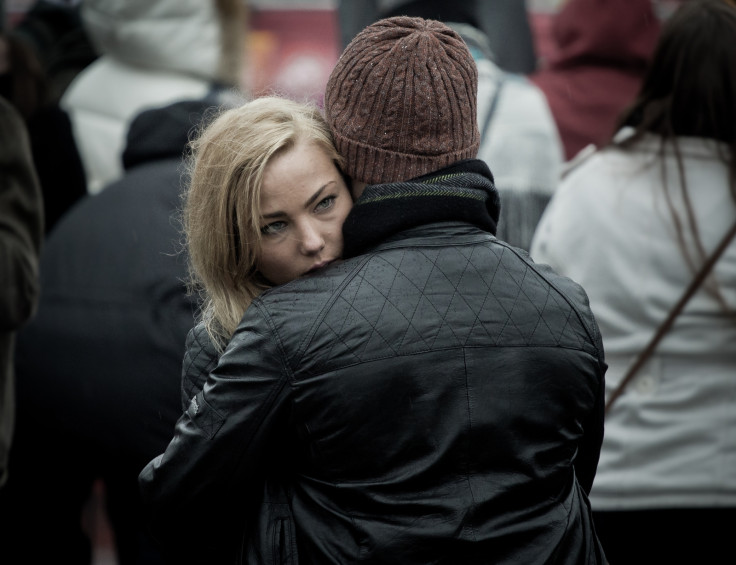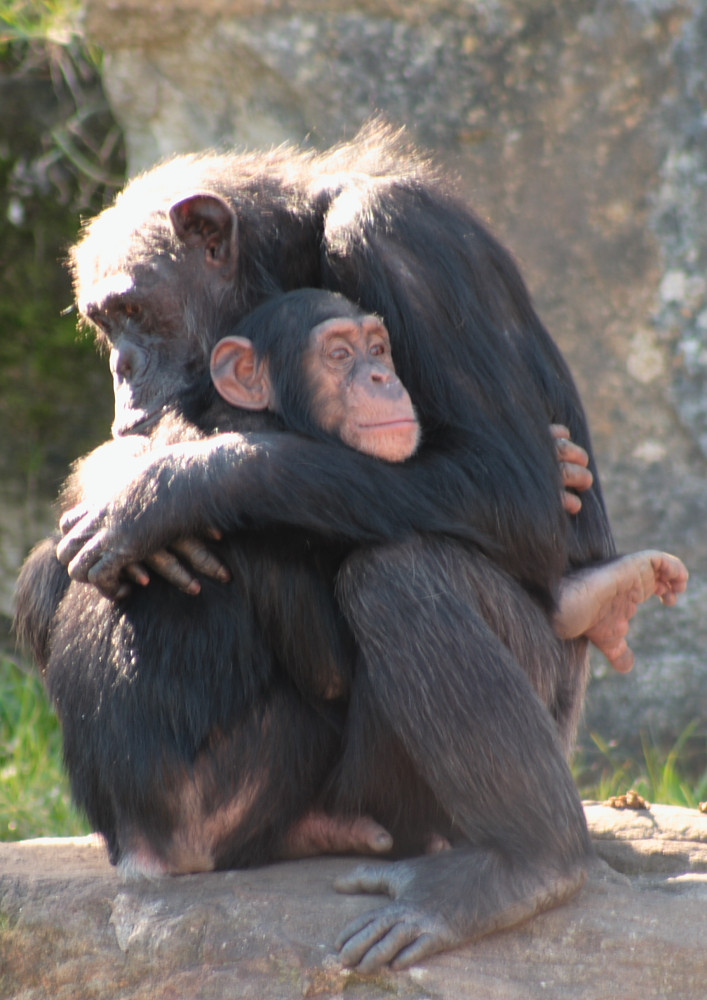People and chimps react to violent attacks the same way – by giving the victims a hug
Psychological analysis of CCTV footage could overturn our ideas of how people react to crimes.

Humans console friends after a robbery with hugs to help reduce stress, finds a study of shop CCTV footage handed over by the police. The study is the first scientific analysis of how people react immediately after violent or life-threatening incidents.
The behaviour has been studied before in primates from bonobos to chimpanzees, and also in human children. But there had never been a scientific study of how adults behave in the wake of a real violent incident.
The aftermath of violence is a particularly hard thing to study in humans. Psychologists have had to rely on eye-witness accounts, which can be unreliable, and anecdotal reports. Any kind of experiment tends to influence people's behaviour, as they know they are being watched and don't act naturally.
For the first time, researchers have gained access to CCTV footage in shops to see how people react in the heat of the moment. They studied videos of 22 robberies in shops, involving 249 people – bystanders and victims.
One of the most common reaction, they found, was to come up to the shop assistant who had been threatened and offer them consolation in the form of a hug. Hugs help to reduce stress levels in the victim of the crime.
"Everything we know about violence is based on retrospect," study author Marie Rosenkrantz Lindegaard of the Netherlands Institute for the Study of Crime and Law Enforcement told IBTimes UK.
"It's based on what we know from the police, offenders, victims and sometimes bystander descriptions. We all know that these perspectives are for many reasons biased. So this study is unique, as we finally get to see how they really react right after an aggressive, high-intensity conflict."

The strongest factor in how likely someone was to offer consolation was whether they knew the person or not. This was mainly determined by whether it was an employee bystander – who was assumed to know the employee who had been victimised – or a customer, who was assumed not to know them.
The next strongest factor was gender, with women being much more likely to offer comfort after an incident than men. But the gender of the person who had been victimised didn't influence how likely it was for someone to console them.
"We would see women at the complete opposite side of the shop walk through whole shop and offer consolation even though 10 customers and four male employees were standing next to victim," said Rosenkrantz Lindegaard.
Factors such as age and ethnicity didn't seem to have an effect on who was likely to give or receive consolation, the study found.

This kind of study using CCTV footage could overturn many of the long-held views in social psychology.
"There have been a lot of bystander studies in social psychology, and it's one of the most well confirmed findings of the field, that the more people are present, the less likely people are to intervene," said Rosenkrantz Lindegaard.
"But all of that has been based on experimental studies. Now there are lot of indicators based on real life observations that actually disprove that particular finding."
The research is published in a paper in the journal PLOS ONE.
© Copyright IBTimes 2024. All rights reserved.







